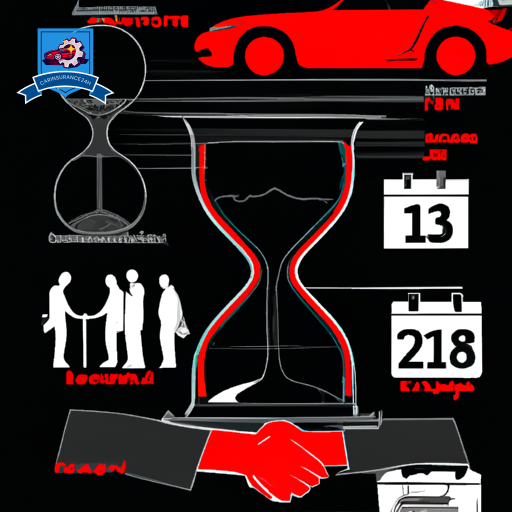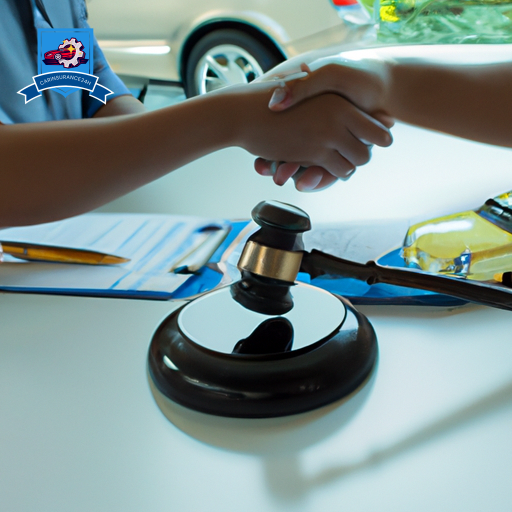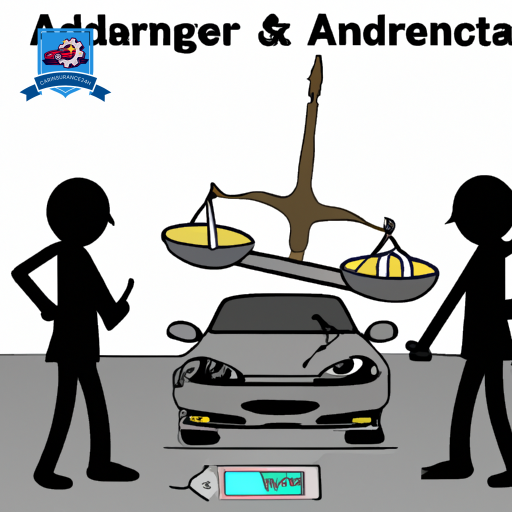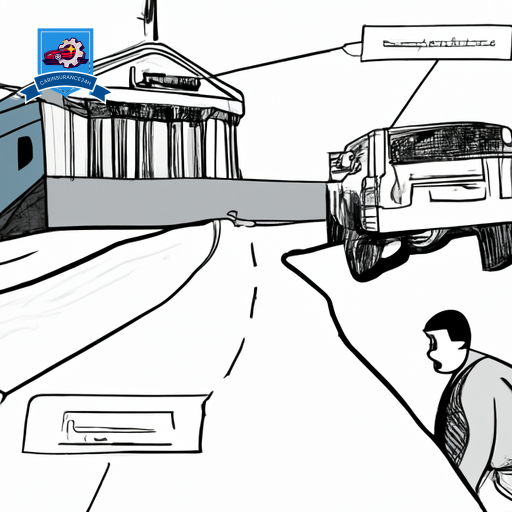In the digital age, filing a car insurance claim online has become a streamlined process, yet many policyholders are unaware of the steps involved. Initially, evaluating the damage thoroughly is pivotal to understand the scope of the claim.
Subsequently, gathering all necessary documentation, including photographs of the damage, police reports, and personal information, is imperative. Identifying the correct platform provided by the insurer for online claims submission marks the next step.
However, the process does not end with the submission of your claim; understanding the nuances of follow-up procedures is essential for a successful resolution. This discourse aims to unravel these complexities, guiding policyholders through each critical stage.
Assess the Damage

Before initiating an online car insurance claim, it is important to accurately assess the extent of the damage to your vehicle. This initial step is critical for several reasons. Understanding the damage severity helps in determining whether the insurance policy covers the damages. It influences the decision-making process regarding whether to file a claim based on the policy’s deductible amount. Finally, a precise assessment aids in the efficient processing of the claim by the insurance company.
To commence this assessment, visually inspect the vehicle to determine the areas impacted. Documenting this through photographs or videos can provide a clear record of the damage severity. This visual evidence is indispensable for supporting the claim and facilitating the insurance company’s evaluation process.
Following the visual inspection, consulting with a professional auto repair shop can offer a more detailed analysis of the damage. These professionals can provide repair estimates that are critical in understanding the financial implications of the damage. Repair estimates include a breakdown of the costs associated with parts replacement and labor, which are essential for the insurance company to determine the claim’s validity and the payout amount.
Additionally, obtaining multiple repair estimates can be beneficial. It ensures that the quoted repair costs are reasonable and reflects the market rate. This step guards against inflated estimates that could affect the claim’s approval or result in higher out-of-pocket expenses.
Gather Necessary Information

Once the damage has been accurately assessed, gathering all necessary information becomes the next pivotal step in filing a car insurance claim online. This process is critical for ensuring a smooth and efficient claim process. Collecting detailed data not only aids in the substantiation of your claim but also accelerates the decision-making process for insurance companies. It is imperative to approach this task with diligence and attention to detail.
To guarantee thorough document preservation and the inclusion of credible witness accounts, consider the following information vital for submission:
- Personal Information: Include your full name, contact details, policy number, and the date and time of the incident. This basic information is essential for your insurer to initiate the claim process.
- Photographic Evidence: Take clear, detailed photos of the damage to your vehicle from multiple angles. Additionally, capture any relevant environmental conditions or road signs that could have contributed to the incident.
- Police Report: If applicable, obtain a copy of the police report. This document is a valuable source of unbiased information and can significantly support your claim.
- Witness Accounts: Collect names, contact details, and statements from any witnesses present at the scene. Witness testimonies can provide an independent perspective of the incident, reinforcing the validity of your claim.
Compiling this information meticulously is a cornerstone of document preservation and plays a crucial role in corroborating your account of events with tangible evidence and reliable witness accounts. By gathering all necessary information upfront, you pave the way for a straightforward and successful online claim submission.
Find Your Insurer’s Platform

Having gathered all necessary information, the next step involves locating your insurer’s digital platform for claim submission. This process is pivotal as it guarantees that you are positioned to proceed efficiently and securely with your claim. Most insurers provide a dedicated online portal or a mobile application for this purpose, both of which are designed to streamline the claim process for their policyholders.
When searching for your insurer’s platform, it is essential to first confirm the website’s security. A secure website typically begins with ‘https://’ and displays a padlock symbol in the address bar. This indicates that the site encrypts your data, protecting your personal and financial information from potential cyber threats.
Another key aspect to take into account is platform compatibility. It is vital that the insurer’s platform is compatible with your device and browser to avoid any technical difficulties during the claim submission process. This ensures a smooth, uninterrupted experience from start to finish.
To assist in identifying and accessing your insurer’s digital claim submission platform, the table below provides a simplified guide:
| Feature | Importance |
|---|---|
| Secure Website (https://) | Guarantees data encryption and protection |
| Padlock Symbol in Address Bar | Confirms website security and authenticity |
| Compatibility with Devices | Prevents technical issues during submission |
| User-Friendly Interface | Facilitates ease of navigation and claim process |
Submit Your Claim Online

After identifying your insurer’s digital platform, the next step involves submitting your claim online to initiate the process. This phase is important as it sets the stage for how quickly and efficiently your claim will be addressed. It requires attention to detail and a thorough understanding of your policy to avoid common pitfalls that could lead to claim denial.
When submitting your claim, it’s essential to gather all necessary documentation and information that supports your case. This includes photos of the damage, a copy of the police report if applicable, and any other relevant evidence that can substantiate your claim. Being thorough in this step can significantly influence the outcome of your claim.
Understanding the reasons behind claim denials is also important. These can range from filing a claim for damages not covered under your policy, to submitting incomplete or incorrect information. Familiarizing yourself with your policy coverage limits and ensuring your claim falls within these boundaries can mitigate the risk of denial.
- Review your policy coverage limits to make sure your claim is valid.
- Gather all necessary documentation to support your claim.
- Double-check the information you submit for accuracy and completeness.
- Be aware of common claim denial reasons to avoid potential pitfalls.
Submitting your claim online offers convenience and efficiency, but it also demands a level of diligence to make sure the process goes smoothly. By following these guidelines and preparing your submission carefully, you can navigate the online claim process with confidence, setting the stage for a favorable resolution.
Follow Up on Your Claim

Submitting your claim online is just the initial step; following up on your claim is key to guaranteeing its timely and accurate processing. After you have submitted your claim, the insurance company begins the evaluation process, which involves evaluating the damage to your vehicle and determining the compensation amount. It is vital during this period to stay proactive and monitor the progress of your claim.
To effectively follow up on your claim, you should first check the claim status regularly. Most insurance companies provide online portals where you can log in and view the current status of your claim. This feature allows you to track the progression from submission to resolution, including any requests for additional information or documentation. Keeping an eye on the claim status helps you stay informed about any potential delays or issues that may arise.
In addition to monitoring the claim status, you should be prepared for settlement negotiation. Once the insurance company has evaluated the damages, they will offer you a settlement amount. It is important to review this offer carefully and compare it against the estimated repair costs and your policy’s coverage. If the proposed settlement does not adequately cover the damages, you have the right to negotiate with the insurance company. This process may involve providing additional documentation or evidence to support your claim for a higher settlement amount.
Throughout the follow-up process, maintaining open communication with your insurance agent or representative is essential. They can provide updates, answer questions, and assist with settlement negotiation. By actively following up on your claim, you guarantee that it is processed efficiently and that you receive the compensation you are entitled to.
Frequently Asked Questions
What Should I Do if I Disagree With the Insurer’s Assessment of the Damage or the Settlement Offer?**
If you disagree with the insurer’s evaluation or settlement offer, collect thorough claim documentation to support your case. Utilize negotiation tactics to address your concerns, striving for a resolution that properly represents the damage incurred.
How Can I Protect My No-Claims Discount When Filing an Online Car Insurance Claim?**
To protect your no-claims discount, review your policy details closely and maintain safe driving habits. Approximately 20% of drivers lose their discount annually due to claims, underscoring the importance of understanding your insurance coverage fully.
Is It Possible to File a Claim Online if I Was at Fault in the Accident?**
Yes, it is possible to file a claim online if you were at fault in the accident. Online platforms typically require information pertinent to fault determination, allowing you to submit your claim efficiently and effectively.
What Are the Implications of Filing a Car Insurance Claim Online for My Future Premiums?**
Filing a car insurance claim online can impact future premiums, influenced by premium factors such as the nature of the claim. The reporting timeline is also important, as delays may further affect premium adjustments.
Can I Choose My Own Repair Shop if I File the Claim Online, or Must I Use One Approved by the Insurance Company?**
When filing a claim, the option to choose your own repair shop or use one approved by the insurance company varies, with considerations including shop accreditation and the provision of repair warranties by the insurer.










